Major repairs and maintenance
Major repairs are a set of construction measures to improve the condition of buildings and structures. Overhaul helps eliminate physical wear and improve the operational properties of an object.
Repair work concerns all parts of the building:
- foundation;
- walls and columns;
- partitions;
- roofs and roofing coverings;
- interfloor ceilings and floors;
- windows, doors and gates;
- internal plaster, paint and other coatings for cladding;
- ;
- central heating;
- ventilation;
- water supply and sewerage;
- hot water supply;
- electrical networks, lighting and communications.
Overhaul of a building can be comprehensive or partial.
Current repairs are work to renew the resource of an object without significant changes to capital structures and engineering systems. Current repairs are faster, easier and more economical than major repairs.
Current repairs may include the following work:
- strengthening the foundation, floors;
- elimination of surface deformations, minor damage, partial replacement of individual elements;
- painting, sealing joints in walls, changing sections of cladding, repairing facades;
- replacement of drainage systems, elimination of ventilation and insulation defects;
- troubleshooting roofs and roofing;
- restoration or replacement of individual elements of doors, windows, floors, balconies, stairs;
- restoration of serviceability of stoves, hearths, central heating systems, water supply;
- improvement of interior decoration;
- restoration of waste chutes;
- repair of sidewalks, paths, etc.
Major renovation. What is this?
This is a type of work in which the object is restored to current standards and standards. It is also important here to replace any parts of the construction project if necessary.
Major renovations in the Town Planning Code
A major overhaul is a complete replacement or partial restoration of elements of a construction project (except for the replacement of load-bearing structures), replacement or restoration of systems and networks of engineering equipment, replacement of some part of the load-bearing structures with the same ones or those that can improve existing performance.
This is important to know: Application to cancel a court decision in absentia: sample 2020
Major repairs of linear objects - repair of roads, railways, overpasses, that is, those objects whose length greatly exceeds their width. This is a complete or partial change in existing parameters, but which does not change their category or class, as well as the original indicators and characteristics. Here, too, there is no need to change the boundaries of the right of way and their protection zone.
From all of the above, it becomes clear that major repairs do not change the technical indicators of the object (does not increase or decrease its area, etc.).
What is a capital construction object and a linear object?
Capital construction projects mean any buildings, structures, structures, as well as those objects that have not yet been fully built. This does not include temporary structures, stalls, etc. In addition, the construction objects may not be all buildings, but parts of them, for example, a roof, a wall, etc.
Linear construction objects, as mentioned earlier, are various types of heating networks, pipelines, railways, roads, bridges. Here a major overhaul of the entire roadway or part of it can be carried out.
Major renovation of buildings. What does it include?
This type of repair work is carried out if the building is worn out or some part of it has begun to collapse. Here the main goal is to restore or completely replace part of the building.

Why is a major overhaul needed?
The main goal is to remove all defects that interfere with the normal functioning of the building, replace or partially restore its parts, and also strengthen the load-bearing structures, foundation, and roof. If replacement is needed, it is carried out using more advanced materials and technologies.
Major renovation. What is it like?
This type of construction work is divided into two types: comprehensive and selective repairs. Comprehensive overhaul is a type of work in which important elements and utilities are replaced in order to improve them. With such repairs, the entire building or some parts of it are subject to change. Here it is important to completely eliminate physical and moral wear and tear.
Selective overhaul is a type of work in which the complete or partial replacement of elements of buildings and structures occurs. Here, too, it is important to completely eliminate moral and physical wear and tear.
How to register and reflect in accounting the acquisition of fixed assets for a fee
accept for accounting at original cost.
In the initial cost of fixed assets acquired for a fee, take into account the following amounts:
- the cost of purchasing the property;
- the costs of delivering the object and bringing it into a condition suitable for use. For example, the cost of services of a transport organization or the salary of employees who assembled and installed the object;
- submitted VAT. True, they do this only if they plan to use the fixed asset in activities that are not subject to this tax. In other cases, VAT and excise taxes are not taken into account in the initial cost.
This procedure follows from the provisions of paragraphs and PBU 6/01.
A detailed list of expenses that form the initial cost of fixed assets is given in.
Important: fixed assets can be taken into account:
- upon purchase – at the seller’s price, taking into account installation costs;
- during construction - at the price of the contract for the creation of the facility. For example, a construction contract.
And other costs that are directly related to the purchase or construction of fixed assets can be immediately included in expenses for ordinary activities.
This follows from PBU 6/01.
Determine the initial cost of fixed assets based on:
- primary accounting documents. For example, invoices, acceptance certificates, etc.;
- any other documents confirming the costs incurred. For example, customs declarations, business travel orders, etc.
Check if the primary documents contain all the necessary information. Usually they use unified forms in which all of them are provided. However, the law does not prohibit you or your counterparties from using their own forms. And here, first of all, it is necessary to check the presence of all the necessary details, which are provided for in Article 9 of the Law of December 6, 2011 No. 402-FZ. Otherwise, the document cannot be considered primary, which means it is also impossible to confirm the acquisition of a fixed asset or certify a certain amount of its initial cost. All this follows from the provisions of Article 1 and the Law of December 6, 2011 No. 402-FZ and is confirmed in.
Checking for errors, tax differences between repair and reconstruction of fixed assets
Redevelopment with a change in the purpose of the building - reconstruction
Installing additional equipment on a vehicle is not an upgrade
In what cases is replacing OS parts equivalent to reconstruction?
G
The time between repair and reconstruction of a fixed asset is barely noticeable. Especially between major repairs and reconstruction (see table below). But the procedure for reflecting expenses for them in tax accounting depends on what work was carried out. If it was a repair, the organization takes into account the costs in full during the period of their implementation ().*
TABLE. HOW REPAIR OF A FIXED ASSEMBLY DIFFERS FROM RECONSTRUCTION
| Type of work | Purpose of the work | What does the work involve? | Result |
| Maintenance | Maintaining an OS object in a state suitable for use | Elimination of minor damage and malfunctions of fixed assets. Replacement or restoration of its individual wearable components and parts | Prevention of early wear and tear of fixed assets |
| Major renovation | Complete replacement of worn structures and OS parts. Or installing more durable and economical analogues instead | ||
| Reconstruction or modernization | Updating or rebuilding an OS object, expanding or changing the scope of its use | Re-equipment of a fixed asset with a change in its purpose (for example, repurposing a production facility into an office space), adding new areas to a building, installing an elevator in the building, a ventilation system, etc. | The emergence of new qualities in an OS object, a change in its technological or service purpose, an increase in its useful life or power |
Reflection of transactions in enterprise accounting
We figured out what repair and reconstruction are, what the difference is according to the Civil Code of the Russian Federation. But how should such transactions be reflected in the accounting of a legal entity? First of all, you need to understand that in accounting all costs for repairing fixed assets (fixed assets) should be reflected in the period in which such expenses arose on the corresponding accounts 44, 20, 26, 25, etc. At the same time, modernization costs, which entail an improvement in the technical characteristics of the facility, increase the cost of the original facility according to the norms of clause 27 of PBU 6/01.
As for tax accounting, there are also differences in how to reflect repairs and reconstruction (modernization) of fixed assets. When carrying out repairs, all costs are allowed to be written off at a time as other expenses of the enterprise of the current period (subparagraph 2, paragraph 1, article 253, paragraph 1, article 260, paragraph 5, article 272, paragraph 2, article 257). This applies to both routine, current, and major repairs. Regarding reconstruction, the situation is different. Such costs should be included in the cost of the fixed asset, and they will be written off by calculating depreciation charges during the life of the object (clause 2 of Article 257, clause 5 of Article 270).
Reconstruction of an unfinished construction site. Documentation
An unfinished construction project (UNC) is a construction project for which there is a permit for construction work, construction costs have been incurred, but it has not been put into operation (in accordance with the law).
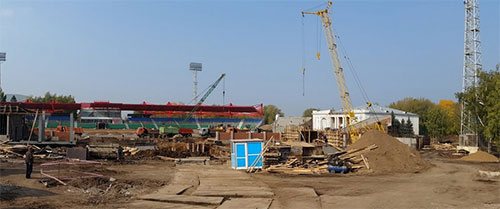
An unfinished construction project may have the following characteristics:
- ONS can be identified;
- the construction of the object was carried out on one’s own land plot or received for use, as well as on illegal grounds;
- the ONS cannot be moved without loss of functional qualities.
Reconstruction work cannot be carried out without the customer providing a technical passport, as well as a document confirming ownership of the ONS.
Technical passport for an unfinished construction site
This document is a plan for the ONS, which is drawn up to scale. It describes in detail all the parameters of the premises, as well as the percentage of readiness. This document has no expiration date.
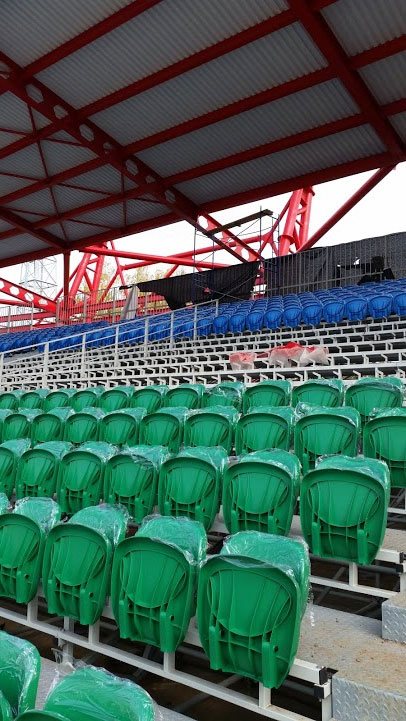
The technical passport includes the following information:
- about the owner of the object (his passport details and TIN);
- Address of the object;
- basic volumetric data of the ONS;
- ONS planning data;
- ONS design data;
- data on the inventory value of the object;
- data on the date of major repairs, construction materials, etc.;
- completion percentage.
A technical passport for the ONS is obtained after carrying out a technical inventory. This process includes work on surveying, measuring the building and all the rooms in it. Thus, it becomes possible to determine the state of the object and include the received data in a special form. As a result of technical inventory, you can:
- determine the actual volume and area of the building;
- assess the technical condition of the facility;
- set the cost.
A technical inventory is carried out not only to obtain a technical passport before carrying out reconstruction work, but in the following cases:
- After reconstruction or major repairs of the facility, before accepting it into operation.
- Before state registration of ownership of ONS.
- Before state registration of ownership of the public assets, formed as a result of the division or merger of the object.
- At the request of the customer.
Permit for construction (reconstruction)
Reconstruction of a capital construction project is a process that requires another document - a construction permit. Such a document implies ownership of the right to construction or reconstruction work.
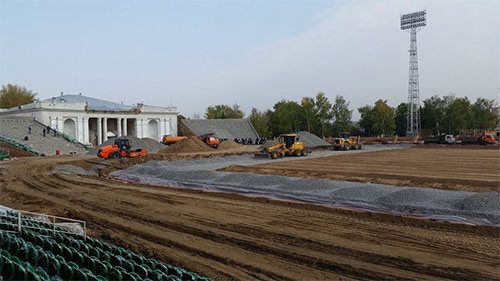
The permit is issued for the term that is provided for by the project for organizing the construction of a particular facility. The document can also be issued at individual stages of construction or reconstruction.
A building (or reconstruction) permit is not required:
- for the construction of a garage on a plot of land provided to an individual for purposes that are not related to business activities. The same applies to construction on a plot of land that is provided for dacha farming and gardening;
- during the construction or reconstruction of objects that are not capital construction projects (sheds, kiosks, etc.);
- during the construction of structures and auxiliary buildings on a land plot;
- when changing capital construction projects, their parts, if these changes do not affect the design characteristics of their reliability and safety;
- during major repairs of a capital construction project.
The validity period of a construction or reconstruction permit may be extended by the State Supervision and Expertise Service at the request of the developer. The request must be submitted at least sixty days before the permit expires.
The concept of "reconstruction"
In urban planning, there are several different meanings of reconstruction. This is not surprising; each law interprets everything differently. But the differences are not big, and by combining everything together you can holistically understand the essence of the reconstruction. What is reconstruction according to the town planning code?
Types of reconstructions
Reconstruction of capital construction projects - replacement of the functional elements of the facility , any areas, superstructures, the size of the building. This includes reconstruction, changes to load-bearing walls, elevators and staircases; exceptions include replacement with the same parts, but more advanced ones.
According to the Civil Code, reconstruction also includes restoration. Mostly very old buildings are restored.
In the set of rules for construction, reconstruction is the updating of living conditions for more comfortable living and work. When reconstructing, all rules must be taken into account; the building must be updated and comply with housing standards.
Codes change frequently enough that many non-modern buildings fail to meet the code. During major repairs, some deviations are allowed, since due to the repair of one part of the building, they will not restore the entire structure; this will take a lot of time and money.
Or it may be that the building simply cannot be renovated to standard, because new rules have changed the height of the ceilings or the size of the balconies.
Reconstruction of linear objects - any increase or decrease in the area or volume of a structure, as a result of which the type of the initial structure will change. After the change, you should change the size of the district zone of the territory.
The security zone will also have to be changed; even there is a change in the building that was insignificant.
In accordance with paragraphs 13 and 14 of the Town Planning Code is a change in any components of the structure, superstructure, etc. Construction - the construction of new structures, buildings, even if they are located on the site of demolished ones. Reconstruction work can change part of the building's facade by changing doorways, installing new window frames, balconies.
If the reconstruction takes place in an industrial building, factory or any other manufacturing company, then elements of the equipment will be changed. But if the quantity and quality of products is increased, this will be considered a re-equipment of equipment.
Any work carried out on structures requires approval from management, and therefore the process may be delayed. Sometimes it is easier to get approval for the construction of a building rather than for restoration.
What is the difference between reconstruction and major repairs? The main differences
- Timing – events vary in timing. The standards were approved in VSN 58-88(r) (put into force by Order of the USSR State Architectural Committee No. 312 of November 23, 1988). The specific duration of a major overhaul or reconstruction is determined depending on the type of object, its condition as a whole or individual elements in particular.
- Frequency - the frequency of implementation of activities is established by various Departmental Construction Standards, which apply by type of facility. These regulatory documents provide general standards for the safe operation of structures, buildings, etc. At the end of this period, it is recommended that the facilities be either reconstructed or overhauled.
- Who is obliged to carry out - organizing the repair and reconstruction of buildings and structures are among the procedures required to be carried out by legal entities. The article is devoted to this issue. 52 Civil Code of the Russian Federation. Basically, such work should be carried out only by individual entrepreneurs or legal entities that are members of an SRO, except for the exceptions provided by law.
How to distinguish reconstruction from repair
There is no definition of the term “repair” in tax legislation. But in Art. 11 of the Tax Code of the Russian Federation states that if the tax legislation does not disclose the meaning of any concept, the taxpayer has the right to use the definitions given in other areas of legislation. After all, the institutions, concepts and terms of civil, family and other branches of Russian legislation given in the Tax Code are applied in the meaning in which they are used in these branches, unless otherwise established by the Code. Let's see what definition of repair work is given in Decree of the USSR State Construction Committee dated December 29, 1973 N 279. Repair work on industrial buildings and structures is a set of technical measures aimed at maintaining or restoring the original operational qualities of both the building (structure) as a whole and its individual designs. We can conclude that the purpose of repair work is to eliminate damage and malfunctions, replace worn structures and parts of buildings and other fixed assets.
The essence of the concepts “completion”, “additional equipment”, “reconstruction”, “modernization” and “technical re-equipment” of fixed assets is disclosed in paragraph 2 of Art. 257 Tax Code. For profit tax purposes, these should be used as a guide. Thus, reconstruction is the reorganization of existing fixed assets associated with the improvement of production and an increase in its technical and economic indicators. These works are carried out under a project for the reconstruction of fixed assets in order to increase production capacity, improve quality and change the product range.
Completion, additional equipment and modernization include work caused by a change in the technological or service purpose of an object of fixed assets, increased loads or other new qualities.
Technical re-equipment is a set of measures to improve the technical and economic indicators of fixed assets or their individual parts. This improvement in performance is carried out through the introduction of advanced equipment and technology, mechanization and automation of production, modernization and replacement of obsolete and physically worn-out equipment with new, more productive ones.
Having analyzed the above definitions, we can note the following. As a result of modernization, reconstruction and other similar activities, the main technical and economic indicators of depreciable property change, while the purpose of repair work is to eliminate the malfunctions and defects that have arisen and maintain fixed assets in working order. That is, for the correct qualification of the work performed, what is of fundamental importance is not the content and types of work, but the goals and consequences of their implementation for the object.
In particular, the main technical characteristics of such an object of depreciable property as a building are the area of the premises, their capacity, throughput, etc. Reconstruction can be recognized as work that results in the reconstruction of a building carried out in order to improve production and increase its usable area. Cosmetic repairs in a building, repairs of heat, water or electricity supply systems, work to improve the appearance of the object, which does not lead to a change in the functional purpose, does not increase its usable area, but only helps maintain the building in proper condition, suitable for its intended use, cannot be classified as reconstruction.
In addition, in order to correctly determine the work on modernization and other improvement, in particular, of equipment, it is necessary to pay attention to changes in the standard indicators specified in the passport of the fixed asset object or other technical documentation for this object. For example, after modernization, the equipment operates under increased loads, or the volume of products produced on it has increased, or the purpose of using the facility has changed
Redecorating
When the task is simply to “refresh” old renovations in an apartment or house, it is most reasonable to focus on the “cosmetics” option.

Cosmetic repairs are also used to maintain the operational qualities of residential premises, by restoring the protective properties of the materials used and eliminating minor damage during the work.
Simple cosmetic repairs are carried out without replacing various types of finishing - wallpaper, painting walls and ceilings, doors and windows, baseboards and trim. It also does not provide for updating the floor surface with varnish or paint.
In contrast, cosmetic repairs with the replacement of finishing materials are aimed at restoring a room that has lost its attractiveness, and involves the purchase and use of new finishing materials - the same wallpaper, linoleum, carpet, paints and varnishes.
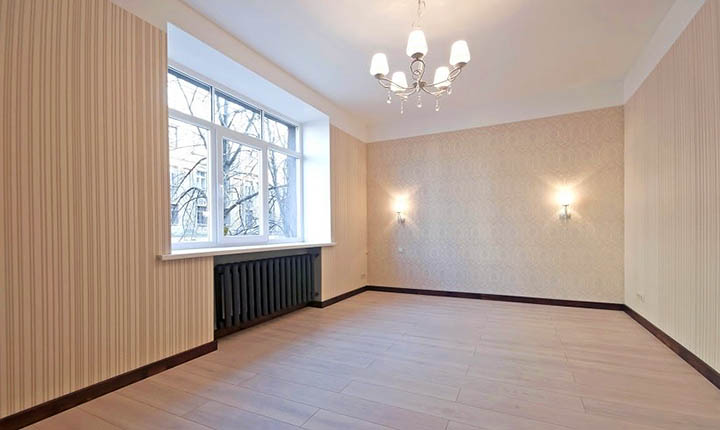
Unlike expensive major repairs, cosmetic repairs do not involve remodeling of premises, installation work, replacement of electrical wiring and plumbing, and other complex work.
How do you know if your home needs a facelift?
The need for repair work is usually assessed based on the following criteria:
Condition of the ceiling, slopes and walls
If cracks or stains appear on the ceiling, but they are small, and the ceiling itself is smooth, it will be enough to make cosmetic repairs. Thanks to it, you can effectively hide problem areas and visual imperfections.

If there are uneven spots on the ceiling, you can also “play” with the light. A well-known technique is when replacing the lighting and chandeliers in the room helped hide this defect.
With walls it is more difficult, especially if we are talking about cracks not in the wallpaper, but in other materials. In this case, if you don’t want to do a major overhaul, these places can be covered with some interior element: hang a picture, a mirror, or install a bookcase.

The uneven slope that appears after replacing the window can be draped or hidden with new curtains.
Floor and coating condition
The floor may look bad. But something else is more important: if you don’t hear a squeak, the integrity of the coating is preserved and the surface is fairly smooth, there’s no need for major repairs, it’s enough to do “cosmetics.”
If you no longer like your floor, you can simply lay linoleum and put a soft carpet on top - this will make the room much more comfortable. You can also use carpet instead of linoleum. This material will effectively hide imperfections and unevenness of the floor, and also fill the rooms with warmth and comfort.

Window
Experienced apartment and house owners know very well all the pros and cons of old windows. And of course, a major overhaul is absolutely unnecessary here.
If there are cracks in your windows, they rattle and provide poor protection from noise, consider ordering and installing plastic windows. They are characterized by: maximum noise insulation, hermetic closure and ease of operation and maintenance.
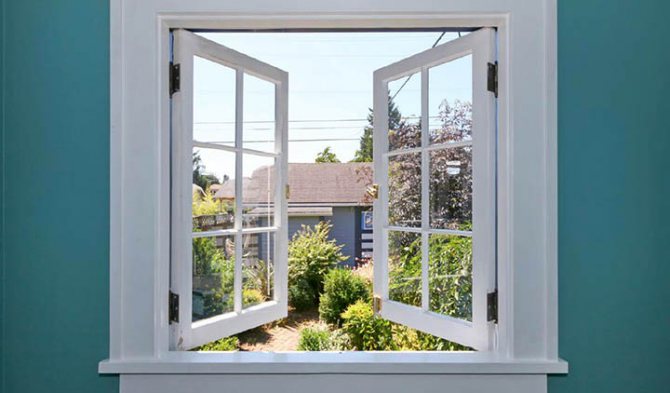
Although many people don’t like plastic windows. Some because of the price, some because of their (allegedly) non-environmental friendliness. Then all that remains is to repair the old wooden frame. All you need for this is a can of paint, a solution to remove old paint, putty to eliminate unevenness on the surface of the frame and sandpaper to clean the surface.
Doors
If the doors have lost their presentable appearance, they do not have to be replaced immediately. You can try painting and varnishing.
How does the level of infrastructure in the village affect the prices of plots and houses? Interview
Why do you need a plan and diagram of the electrical system (wiring) in the house?
Ceiling fans (for the ceiling). Which ones are better to choose for your home?
Tax deduction for the purchase and construction of a house. How to get it and what documents are needed?
How are old houses, buildings, foundations and structures demolished?
Houses and cottages measuring 8 by 8 m. Pros and cons
Apartment in Moscow and work in the capital. Is there an alternative?
Grounding loop in a private house: tips on installation and materials
How to design a staircase in a private house?
3 options for those wishing to move out of town from the metropolis
Design tricks
Recently, it has become fashionable to use mirrors in design. They visually enlarge the space, fill it with light, but most importantly, they can hide some defects in the floor and walls.
If your ceiling has imperfections, it is not recommended to hang a large chandelier, as the bright light will make everything visible. It is optimal to install the light source on the wall, while providing warm, not too bright light.

If you have replaced windows, it is better to hang light tulles and put brightly colored pillows on the sofa. With this design technique you will concentrate attention on the advantages (volume, natural light) rather than the shortcomings of the room.
Reconstruction or major repairs
When it becomes necessary to update the appearance of a building or repair the effects of wear and tear, appropriate measures must be taken. As a rule, in this case, major repairs or reconstruction are used. In order to correctly determine the type of construction work, it is necessary not only to know the history of the building and its imperfections, but also to have a clear understanding of the distinguishing features of major repairs from reconstruction. So, let's look at the characteristics and distinctive features of these two concepts.
Comparison
The main difference between a major overhaul and a reconstruction is that in the first case, the owner of the object (for example, an industrial enterprise) is not faced with the task of fundamentally improving the properties of the corresponding object. The main thing is that it retains its functionality and is not damaged.
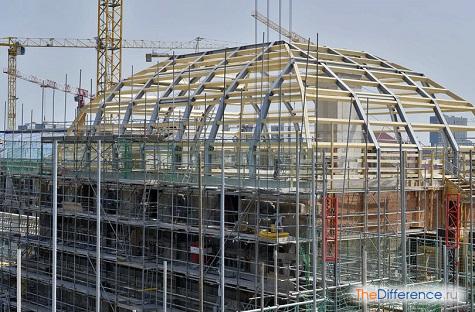
The reconstruction is carried out in order to improve the properties of the object. For example, if this is a building, then it may be expected to increase its area, insulate it, and equip it with new utility infrastructure.
Having determined what the difference is between major repairs and reconstruction, we will reflect the conclusions in the table.







